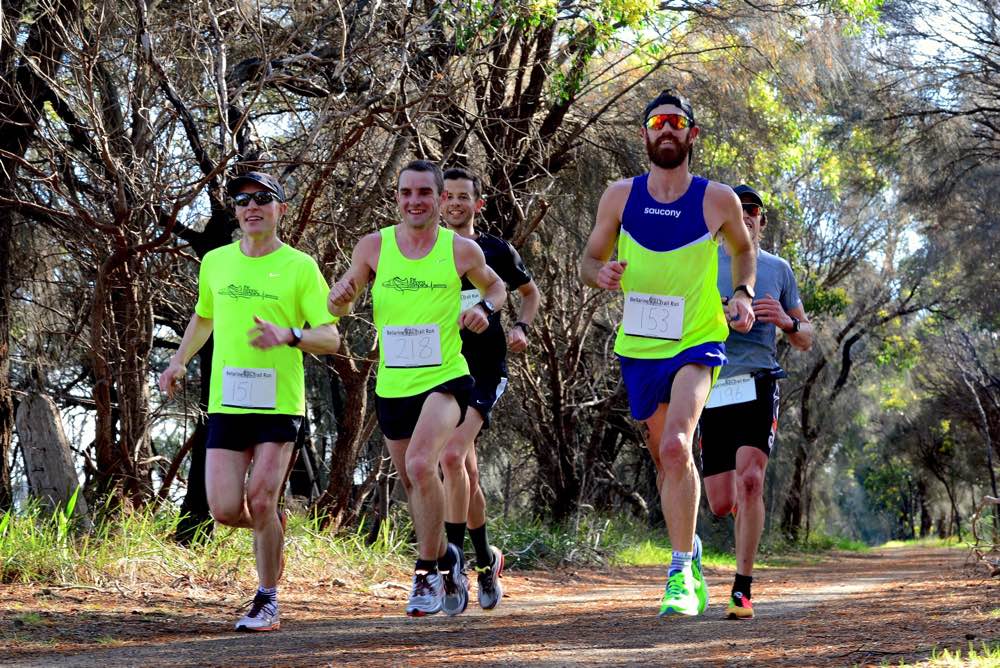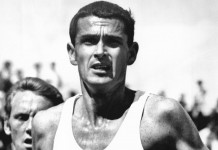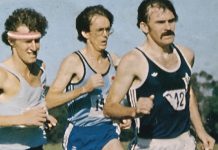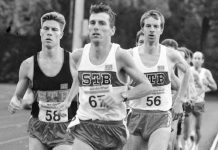THE HIGH MILEAGE WORKING MAN
RT Journal by Julian Spence
The challenges facing an athlete with a full-time job attempting to run a high mileage training program.
About 18 months ago I realized my running wasn’t really progressing at the rate that I wanted. I’m not the most patient person so the little gains that I was achieving weren’t satisfying the ambitious beast inside of me. Also troubling me was the fact that I was about to hit 30 and running out of time to knock off those lifetime running goals that we all have….
I decided to increase my mileage. The elite guys always seem to be running twice per day and the Internet forums are packed with excited runners telling of their breakthroughs after kicking up their kilometres. Furthermore, the simplicity behind it really appealed to me – to get better at running you must run more. It makes sense, especially for the hugely aerobic dependent marathon.

So I started to tack on a few extra k’s each week. I’d been content to sit between 130-140km per week so finding another 25km per week didn’t seem that difficult. Instead of running 60mins each morning, I went 16km. My 90 minute long runs increased to 2 hours and I replaced 2 easy doubles with 4. 100mile weeks were actually not as scary as they sounded. After a month, my workouts started to improve but most noticeably faster were my tempo runs. I was also finishing XC races strongly, like the marathon strong men rather than the track whippets. The high mileage plan was working…
Soon I was looking at 160km as the minimum I needed to hit. Doubles nearly every day became the norm and the mileage for a week or two peaked at 180km. This was certainly not unheard of as many of the other runners around me in the XC races were maxing out at over 200km per week. I now considered this to be true high mileage and the upper limit was again raised! A nasty little habit of running purely to make the weekly total developed. This was at the time that the Strava distance challenges started gaining in popularity. A little embarrassing to admit but this wasn’t a coincidence. The early success of the increased running had me hooked and more was undoubtedly better. I’m getting stronger and I love running –where’s the downside?
Well it turns out that if running isn’t your job and you have commitments outside of being a running bum then there are certainly a few trade offs. These issues aren’t often communicated by those professional runners who write blogs or through the coverage of the elite training groups. Many of these athletes don’t have to juggle full time employment with their training. True professional runners (by definition) either have a sponsor who pays a salary or are part of a training group that offers travel to race and living expenses in exchange for percentages of prize money. For these athletes, the structure of their day is all about maximizing their running performance. A diet of high mileage is complimented with all the ‘extras’ that we consider the 1%’ers. This very much includes rest – the most underrated component of any training program and the most difficult to fit in with a full time job.
For the overwhelming majority of us who aren’t in the upper echelon of the sport and consider running to be a lifestyle rather than career, the high mileage program is wrought with challenges. For instance, lets assume that a runner works from 9am to 5pm, Monday to Friday. Travel to work is half an hour each way and they live in Ballarat, Victoria – the home of distance running in Australia! Location is relevant as it’s winter and daylight is of a premium.
The morning run begins at 6:30am. This is a 70min easy run with drills and strides to finish. This already presents 3 immediate issues –
- The run begins in the dark which forces use of a headlamp as some parts of the run go outside of street lighting. NOBODY enjoys using a headlamp unless they have to. Running this early means that you definitely have to.
- Because of the time constraints, there is no flexibility in choosing the route. The run must start and finish at the front door. This means most of the run is on concrete – beating the legs and stressing the joints much more than the softness of a dirt trail.
- The run started a bit late so there’s no time for post run strides and drills. The 1%’s that look so easy written program start to suffer when the realities of a tight schedule interfere.
- Not much time for breakfast so a takeaway coffee and bagel nails that. Not ideal and another 1%er going missing – nutrition. Nutrition links back to both recovery and performance and the videos I watch on the Internet always show the pro’s cooking up a nutritious storm post run.
- The schedule at work is a standard day, calling for 8 hours sitting at a desk. Sitting has been referred to as the new junk food due to its contribution to the growing overweight issue and the terrible effects that it can have on the posterior chain muscle groups. The desk jockeys pace the hallways, stretching their legs and cursing being chained to their ergo-chairs. Interestingly though, athletes who spend their days doing labour intensive jobs hold a great deal of envy toward their white-collar training partners. They look at their climate controlled offices and sedentary job workplaces and see a more optimal recovery strategy than being on the end of a shovel or laying bricks. In reality, neither are ideal when compared with the napping/rest schedule of a professional. Their job is to run faster and to accomplish this – napping is a required chore that is just as important as their weekly massage or arguably more important than the other 1%’s.
- A scheduled double run is planned for after work. 5pm knock off and travel from work means the run begins at 5:30pm. Headlamps back on and concrete again! Another group has already met at 4:30 and are just finishing up. This group is comprised mainly of school teachers, tradies and students who tend to do their longer runs in the arvo due to the early knock off time. Still, if their run goes longer than 60mins they will spend time in the dark.
The next day is a workout day.
- The morning of workout day calls for an easy double run which means a later start. Sleep is the king of recovery – more important than any ice bath, foam roller or yoga session. For that reason, these mornings are cherished. Still, the run begins at 7:15am – hardly a long lay in.
- After work, a small squad meets at 6pm to warm up before the workout. We missed the last of the daylight so the headlights come out even as we jog our easy 20mins. If the workout is a set of faster intervals, the squad chips in for the lights at the track. Lately though, the venue hasn’t had the personnel to operate the lighting. They’re volunteers also, old track and field tragics who donate their time when they can. Nobody complains.
Although primarily a summer sport, the track can be a savior for distance runners through winter. This particular evening, the rain has created havoc on the local trail and so the tempo session will be 40mins following the white line of lane 8. We get very familiar with the track this evening; another 4km in the opposite direction to cool down on the rubber. It’s not ideal but the squad gets it done.
- There’s no time for cooking by the time we’ve all got off the track and we’re craving some dinner. Optimal recovery calls for quick refuel and the most efficient dinner is the local burger joint. Yeah, there are probably better options but we’re all in our warm up gear and nobody is keen to sit at a restaurant or have the time to make their own dinner. It’s already 7:45pm and we’ve got a midweek long run at 6am the next day…..

It’s not hard to realize why distance runners tend to form friendship groups within their own sport. There aren’t many non-runners who understand the Sunday morning long runs or the late Friday night doubles. After enough invites to nights on the town get declined, eventually they stop rolling in and you begin to lose touch with friends outside your training group. Unless you’re in a close knit team, high mileage running is a lonely sport and it pushes relationships and friendships to the side.
The underlying question facing the high mileage working man is – “is extra running more beneficial than the 1%ers that could be accomplished instead?” For example – would my running improve if I removed the early AM runs and the body got an extra hour sleep per day? Should I replace a double run with a gym workout? Would finishing the run early and making a proper meal increase my performance?
I have definitely noticed an improvement in my running since I increased volume but for us non-professionals the REAL question is – do I enjoy it? Yep, I bloody love it.

















I totally agree. You will only get out of your training, what you put in.
That and a couple of variables, like opportunity to train and for me personally, the company you train with.
I have all of my running recorded on an XL spreadsheet since 2005 (when i took up running) and i can see exactly where and why i got my best results.
But running doesn’t pay the bills, unless you’re at the upper end. But how do you get there without support?